Growing a year’s supply of food can save you thousands of dollars. In addition, one of the best benefits is it has the ability to add years to your life by increasing health and wellness. It is one of the most worthwhile things I’ve ever done in my life and I can’t encourage it highly enough. All that said, it’s not quite as easy as it seems at first glance.

One very important thing is to make sure to have plenty of different vegetables and fruits to choose from all throughout the year. This is important to do so you never get too sick of any one food. The aim is a year’s supply of a garden buffet!
My Failure the First Time of Growing a Year’s Supply of Food
First, let me give some background information. Several years ago, we set a goal to grow all the vegetables we would eat throughout an entire year in our backyard garden.
The first year, we were doing pretty well at having lots of vegetables to eat until the heat of the summer set in. All of a sudden lettuce, peas, carrots, and even cucumbers either bolted or just quit producing because we had been harvesting them all spring.
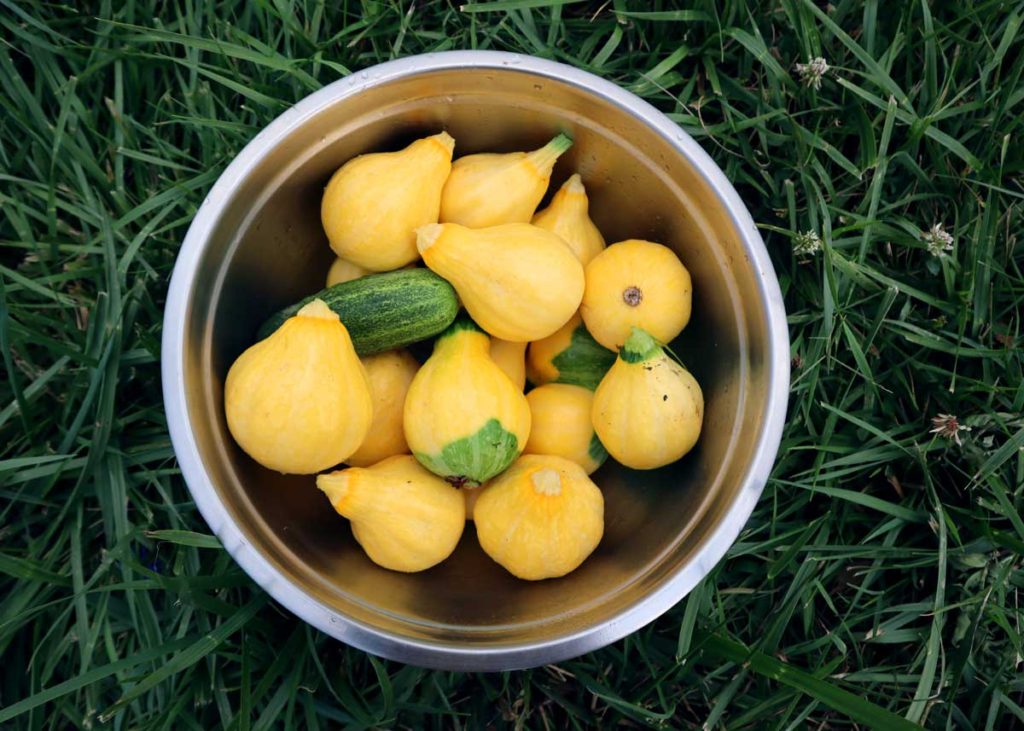
We had plenty of vegetables to eat, but only a few kinds. It was mostly summer squash and tomatoes. We ate tomatoes and squash for breakfast, lunch, and dinner for 4 weeks straight.
Of course, I varied it up as much as possible with different ways to use them but it got incredibly monotonous and I vowed to not let that happen again.
If we were going to not get any vegetables from a grocery store, we needed variety, and a lot of it! This sent me on a path of figuring out how to get plenty of vegetables to choose from throughout the year.
Succession planting is the Key to a Steady Harvest
The key to having a steady garden harvest with plenty of options is succession planting. As a beginner gardener, it’s common to only plant once in the spring and that is it for the year.
Whether you’re in a warm climate with 200 frost free days, or a cold one with 100 frost free days, you shouldn’t ever be planting all at once.
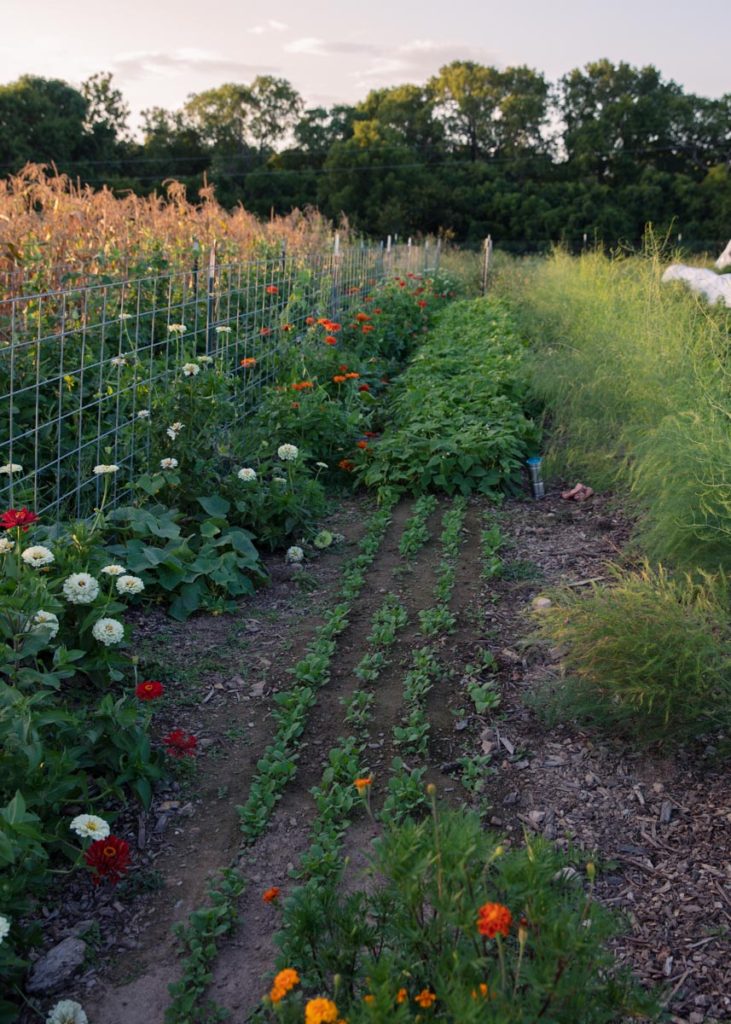
The reason for this being that different crops have different weather requirements. There are vegetables that love cool temperatures and there are vegetables that love heat! Succession planting is an opportunity to extend the season and plant several times so you can get more food and more variety.
What is Succession Planting?
To be more specific, succession planting means repeatedly planting in intervals to be able to get a continual harvest. It also includes that practice of pulling out a crop that has finished producing food and replanting in that same location.
How to Plan a Year’s Supply of Food for a Garden Buffet of Variety
There are many ways to plan out a garden for a continual harvest. Here are some options to consider:
#1 Never have bare ground
Through all the months where you can possibly have food in the ground, keep it planted. That means when a plant slows in growth or is nearly finished producing, it should be pulled out.
Once the spent plants are removed, the garden bed is amended with any additional compost or fertilizer then replanted within a few HOURS with something new. It could be sown from seed or transplanted.
If you are not a planner at all, or it seems overwhelming to plan, this method of having no bare ground will help you to achieve a continual harvest with zero or very little planning.
Additionally, keeping your soil planted will help keep it healthy and thriving at optimal levels. Of course there are other aspects to healthy soil but it is a good principle to follow.
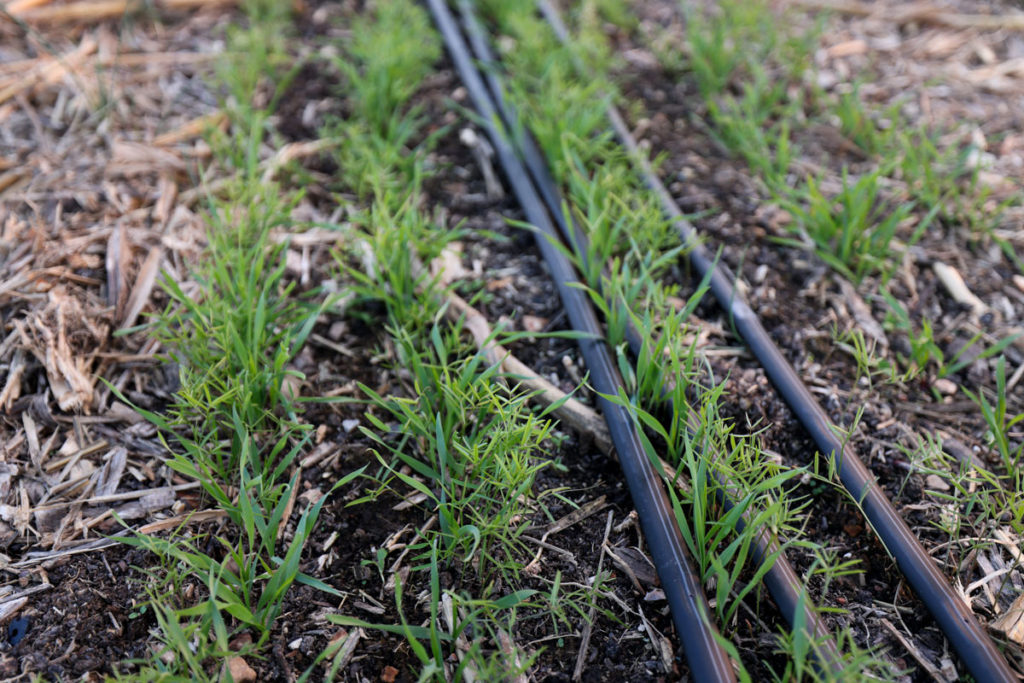
I have a friend who is a market gardener and I visited his farm. I asked him what kind of planning system he used and his reply shocked me. He said he didn’t plan with a planner. He rotated his crops based on memory.
For everything else, he applied the principle of never having bare ground ever at his farm religiously. I can attest to the fact that every single garden bed had something growing in it or had recently been directly seeded.
He needed quite a bit of vegetable variety for his CSA (community shared agriculture) customers and he was able to achieve it. It’s been a few years, so he may have changed his methods but at the time it was effective for his business.
#2 Use a Garden Planner
If you need a written out, visual version of when to plant and harvest, I highly suggest using a garden planner. There are quite a few different garden planners available.
Options include a digital version or a paper version. When using a paper planner for succession planting, all the harvest dates would need to be calculated out manually.
To do this you would take your planting date and add days to maturity. Then calculate out a harvest window period. If the harvest window is 10 days, you’ll need to be succession planting every two weeks or so for a continual harvest.
Find out when harvest dates overlap and that is what options you’ll have to eat during that period of time.
Another alternative is an online or digital planner. I personally use a program called Seedtime and LOVE it! if you haven’t heard of it, you can learn more HERE. I use it for calculating when to plant and when everything is going to be harvested.
It’s also so easy to add succession plantings, it’s literally done with a click of a button. So if I go to my garden timeline and I sort by harvest dates, I can see all the things I’ll be harvesting at the same time.
Here is a screenshot of all the things I’m harvesting and when.
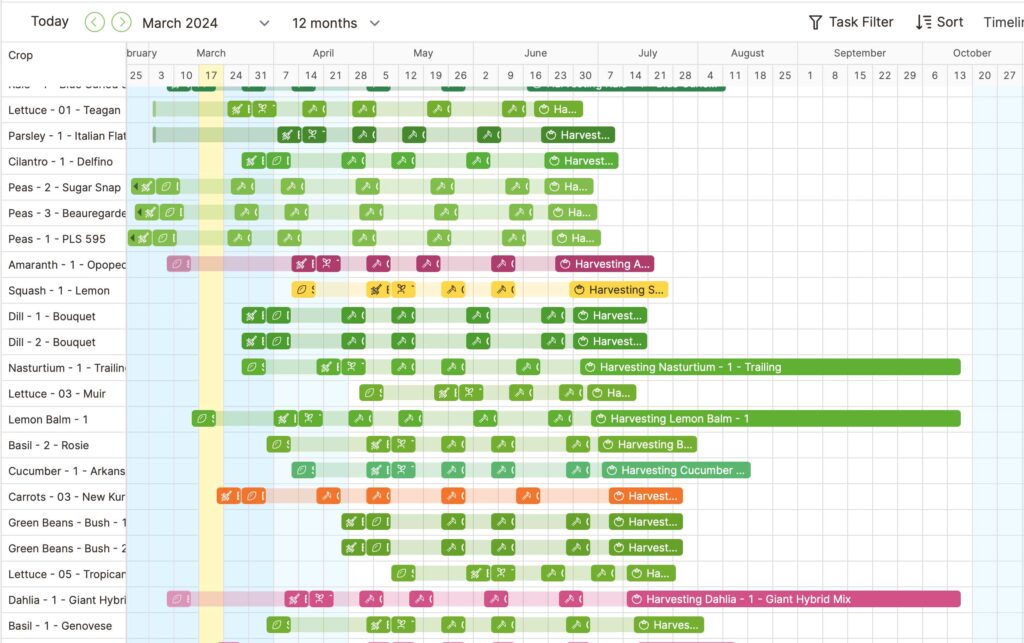
The caveat to planning out the harvest dates is that weather is NEVER consistent. So sometimes the dates calculated for harvest times will be perfect. Other times you’ll be harvesting a little earlier or later than anticipated.
#3 Store Vegetables in a Root Cellar or Cool Area
Another consideration for a year’s supply of food with lots of variety is storing vegetables in a root cellar, basement, refrigerator, or cold room.
There is a good portion of the year in winter where I have a small variety of outdoor plants. For example, we overwinter lettuce, kale, cabbage, and spinach. Since we like more variety in our diet than that, I also have root vegetables stored away.
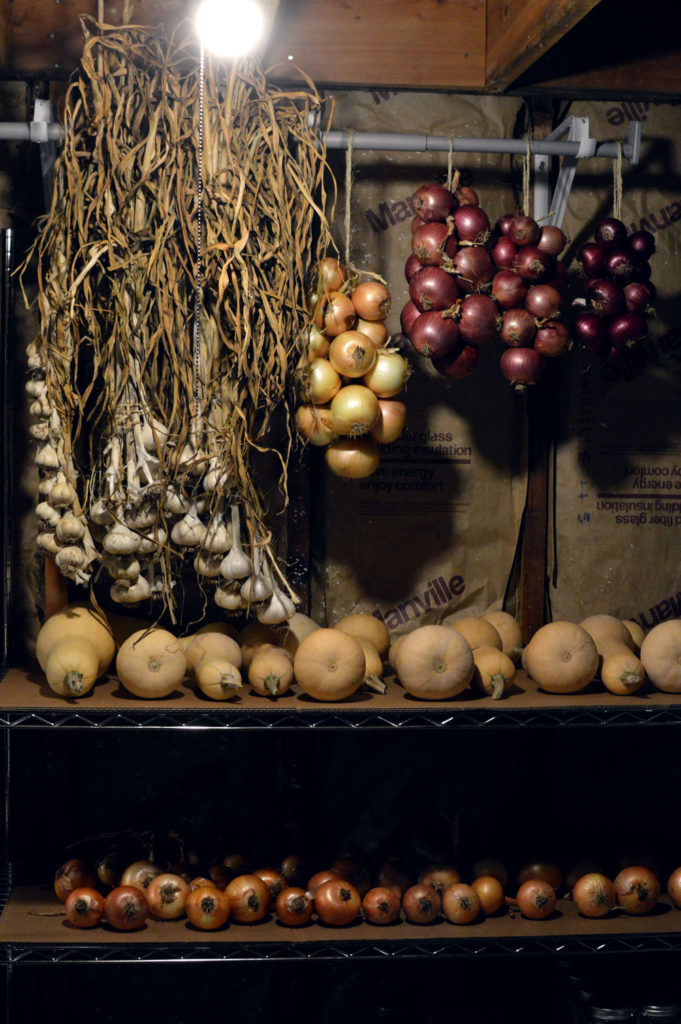
From the time we harvest potatoes in June all the way until March, I have potatoes available to eat. The same holds true with sweet potatoes which I harvest in September and store until May. And also winter squash which is harvested in August and lasts one year at room temperature when properly cured.
I also store onions, carrots, and garlic. I plant carrots two to three times a year, spring and late summer. The harvest window is 15 days. But I plant enough that I can harvest all at once in the spring, store them in the refrigerator and then eat them for the next 8 weeks until the Fall batch is ready for harvest.
In the fall, I leave the carrots in the ground since our winters are mild and they store better there. I have tips for storing vegetables HERE.
#4 Plan out What You Want to Preserve
There is a lot that goes into this so hang in there with me as I attempt to explain!
If the only supply of vegetables comes from you, you need to plan in advance what you’d like to preserve that year. This is especially true in regards to canning.
Canning recipes shouldn’t be altered (aside from salt or sugar) so making sure you have planned all the ingredients you need for a certain recipe to be ready all at the same time is very important.
And even if you’re not canning other preservation recipes require several ingredients to be ready all at the same time. Take for example my kimchi recipe which uses fermentation as the preservation method.
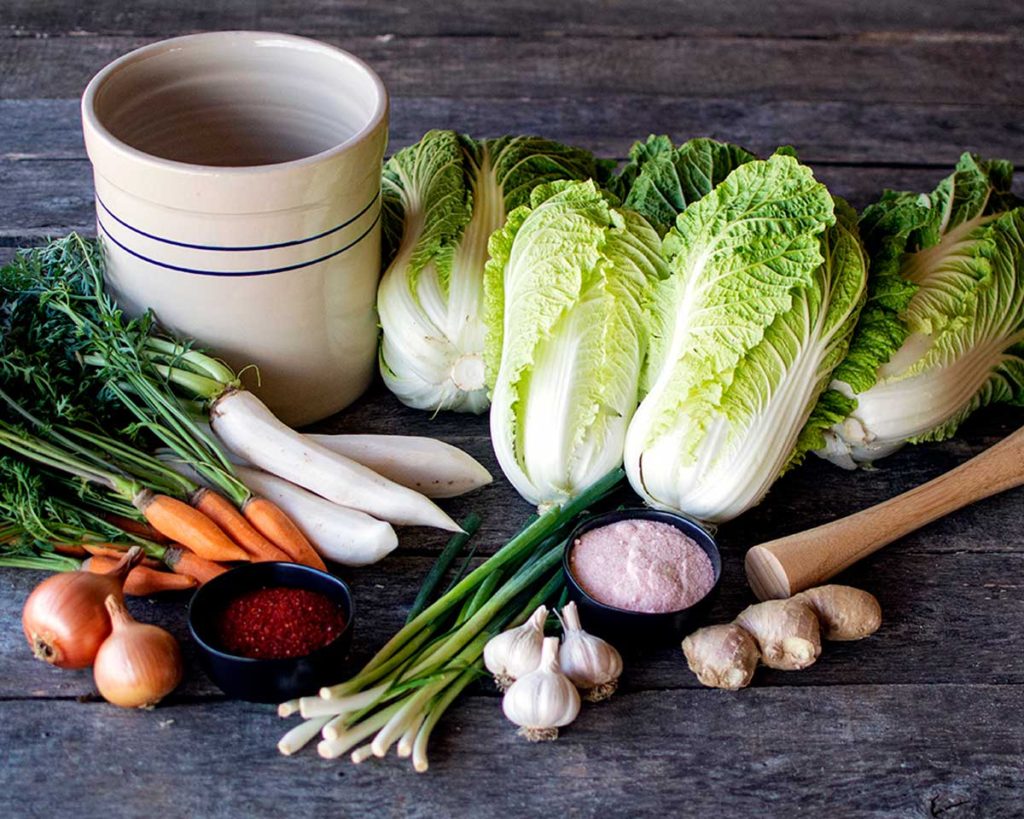
I need napa cabbage, daikon radishes, green onions, garlic, ginger, and carrots all available. I moved all my planting of these ingredients to the fall because that is the best time for most of them to grow.
Garlic and carrots could be grown and stored. They don’t necessarily need to be picked right before. I have used regular onions in place of green if I don’t have any in the fall.
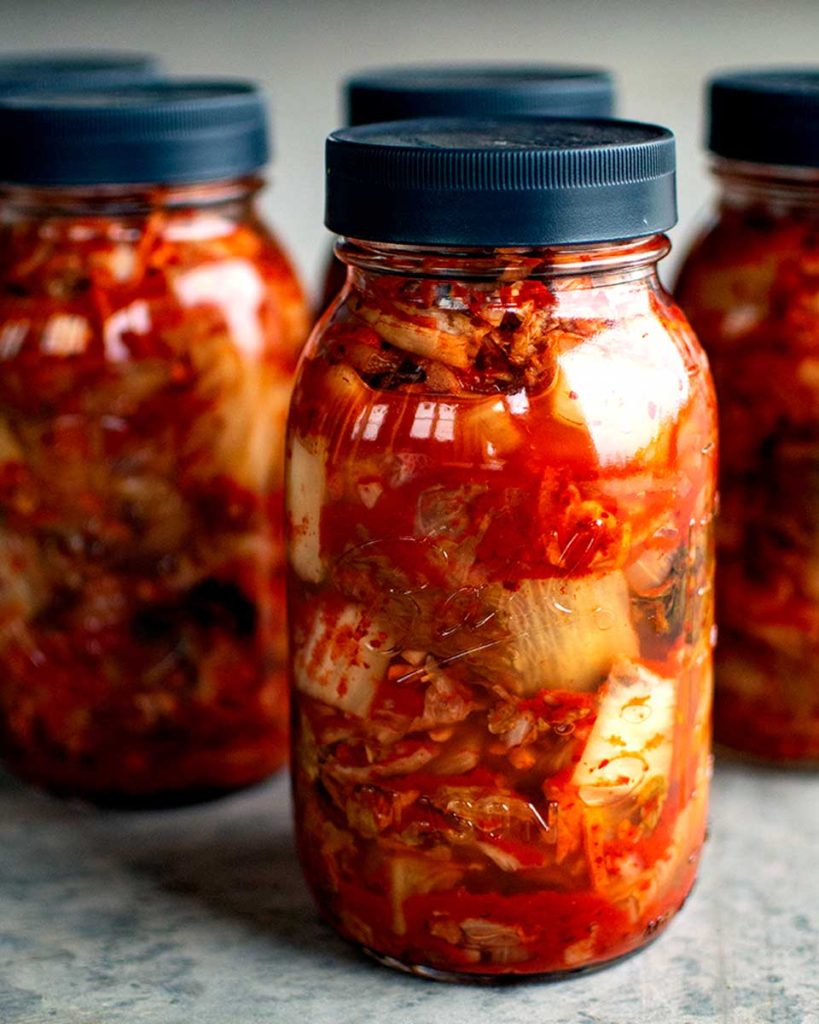
But for the most part, I am planning several months in advance for all these vegetables to be ready around the same time so I can make my kimchi.
Let’s do another example, salsa. We need tomatoes, onions, cilantro and jalapeños ready at the same time. Again, onions need not necessarily be picked from the ground fresh to be used. Instead, you can get them from storage. In addition to the onions, you’ll need the tomatoes, jalapeños, and cilantro ready to pick from the garden all at once.
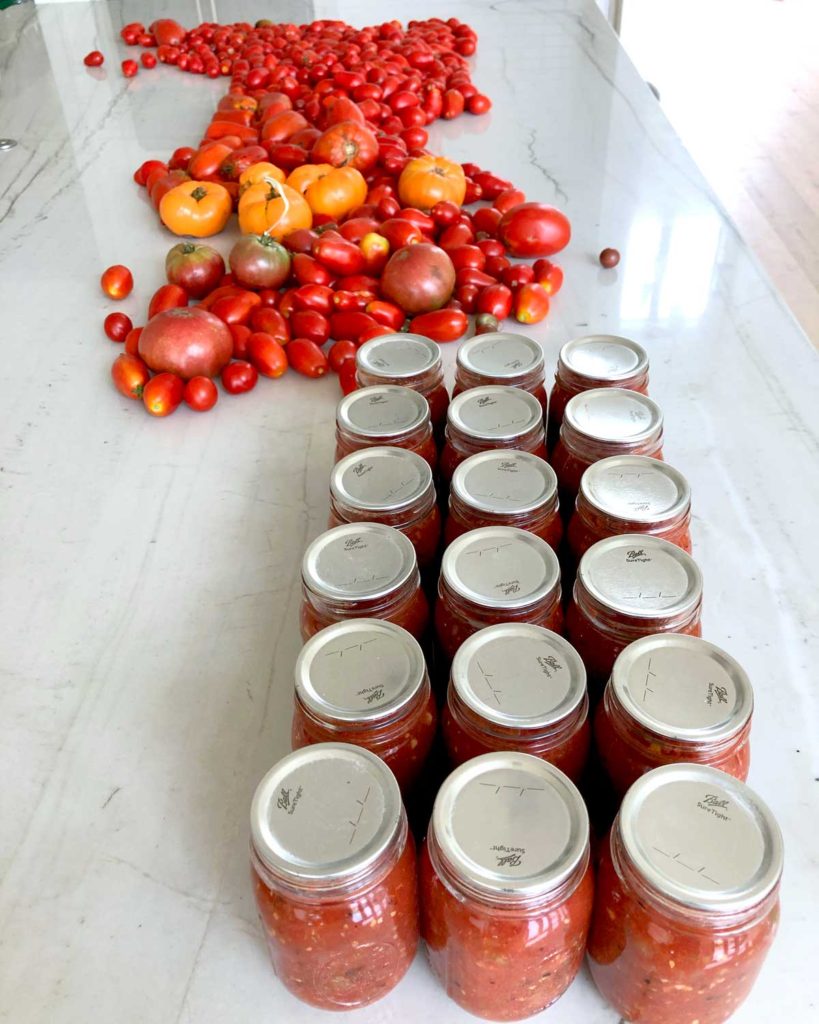
#5 Plant a Perennial Crop with Different Maturing Times
When perennial vegetables or fruits are involved, you can plant varieties that mature at different times. This ensures a continual harvest over a longer span than would normally happen.
Take for example blueberries. There are early season blueberries, mid-season blueberries, and late season blueberries. This doesn’t mean you’ll get blueberries all summer, merely you are extending the harvest time.
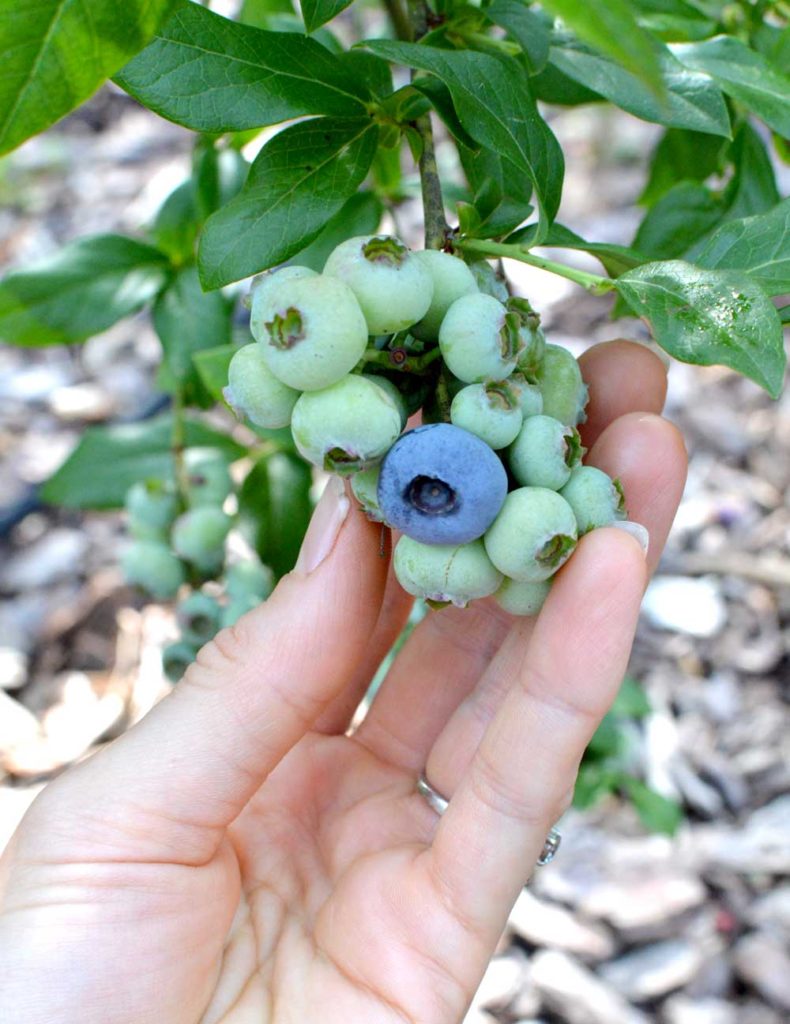
So if normally blueberries are harvested during the last three weeks of June, with an early maturing variety you could get a harvest as early as the last week of May. Then on the other end, you could extend the season an additional two weeks into July by planting a variety that is late maturing.
If you have a longer harvest, then there is more overlap with other fruits and you get more options to choose from.
#6 Plant an Annual Crop with Different Maturing Times
This idea of planting one type of food also applies to annuals. Perhaps you want to avoid repeated planting or don’t have time for it. The solution is plant the same type of food but use varieties that mature at different times.
A good example is cabbages. There are quick maturing varieties that take 60 days to grow. On the other hand, there are varieties that are meant to grow and hold through winter. Those can take 130 days to grow.
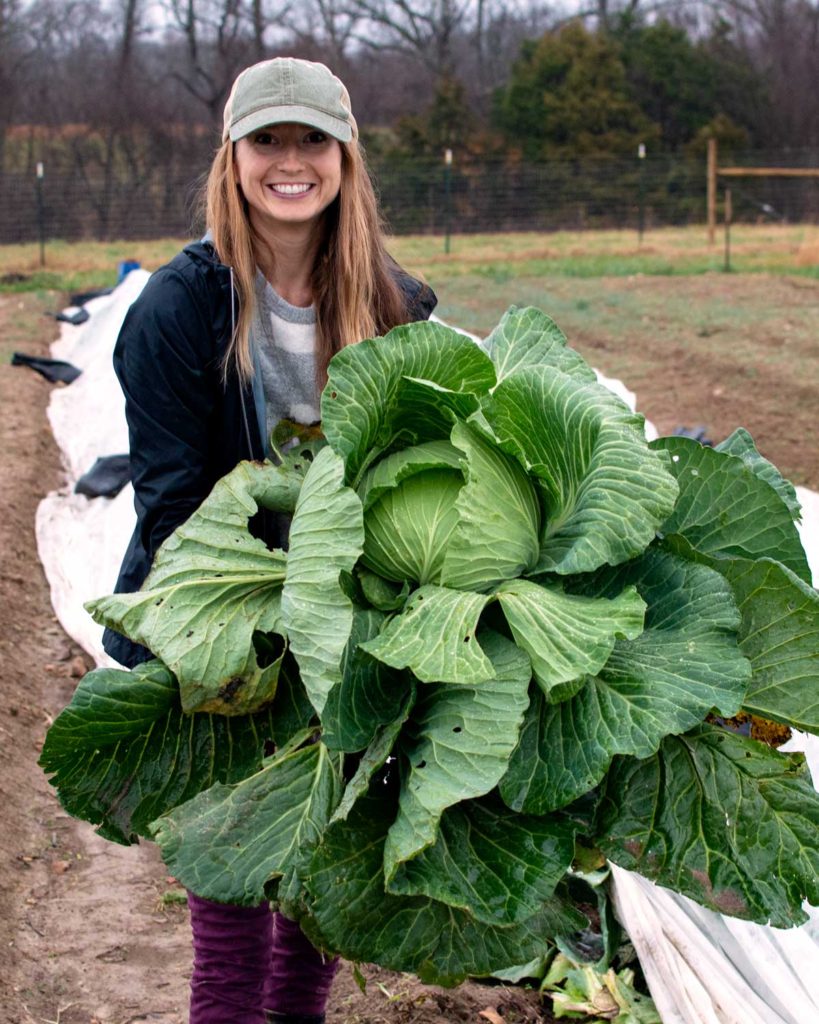
By choosing varieties that mature in intervals through the season, you can get a continual harvest. This can be done with many different crops, like potatoes, corn, lettuce, tomatoes, squash, and more.
Summary
When growing a year’s supply of food, having plenty of variety is important. It makes growing and eating food more fun!
To summarize:
- Always keep the soil planted
- Use a garden planner
- Store Vegetables in a Root Cellar or Cool Area
- Plan out What You Want to Preserve
- Plant a Perennial Crop with Different Maturing Times
- #6 Plant an Annual Crop with Different Maturing Times

2 comments
Thank you SO much, Becky! I was very excited to pull up your blog and see this post. This is incredibly helpful and answered all my questions. Very excited to implement these tips. 🙂
Absolutely! I’m glad it was helpful!